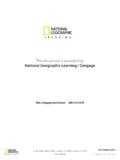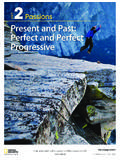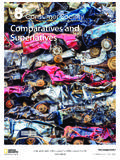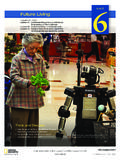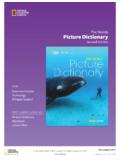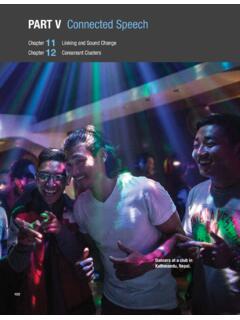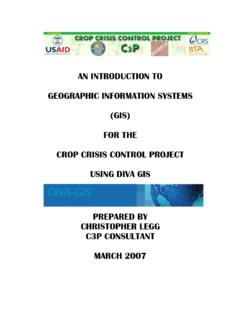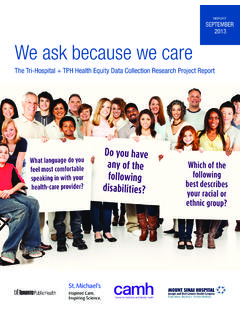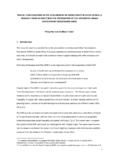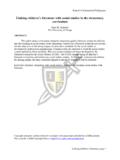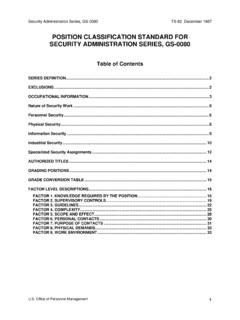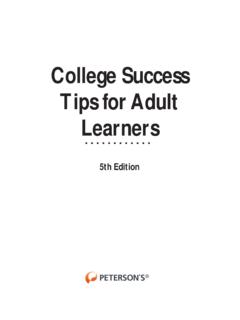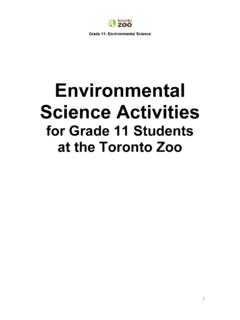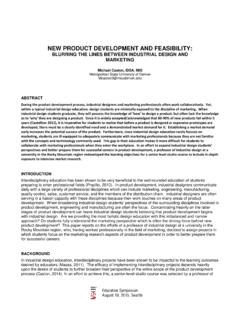Transcription of This document is provided by National Geographic Learning ...
1 This document is provided by National Geographic Learning / | 888-915-3276 Best Practices in Science EducationTeaching Science During the Early Childhood Yearsby Dr. Kathy Cabe TrundleIF YOU HAVE EVER WATCHED A YOUNG CHILD collect rocks or dig in the soil looking for worms you probably recognize that children have a natural tendency to enjoy experiences in nature. Young children actively engage with their environment to develop fundamental understandings of the phenomena they are observing and experiencing. They also build essential science process skills such as observing, classifying, and sorting (Eshach & Fried, 2005; Platz, 2004). These basic scientific concepts and science process skills begin to develop as early as infancy, with the sophistication of children s competency developing with age (Meyer, Wardrop & Hastings, 1992; Piaget & Inhelder, 2000).
2 The Importance of Science in Early Childhood EducationResearch studies in developmental and cognitive psychology indicate that environmental effects are important during the early years of development, and the lack of needed stimuli may result in a child s development not reaching its full potential (Hadzigeorgiou, 2002). Thus, science education in early childhood is of great importance to many aspects of a child s development, and researchers suggest that science education should begin during the early years of schooling (Eshach & Fried, 2005; Watters, Diezmann, Grieshaber, & Davis, 2000).There are several reasons to start teaching science during the early childhood period. First, children have a natural tendency to enjoy observing and thinking about nature (Eshach & Fried, 2005; Ramey-Gassert, 1997).
3 Young children are motivated to explore the world around them, and early science experiences can capitalize on this inclination (French, 2004). Developmentally appropriate engagement with quality science Learning experiences is vital to help children understand the world, collect and organize information, apply and test ideas, and develop positive attitudes toward science (Eshach & Fried, 2005). Quality science Learning experiences provide a solid foundation for the subsequent development of scientific concepts that children will encounter throughout their academic lives (Eshach & Fried, 2005; Gilbert, Osborne, & Fenshama, 1982). This foundation helps students to construct understanding of key science concepts and allows for future Learning of more abstract ideas (Reynolds & Walberg, 1991).
4 Engaging science experiences allow for the development of scientific thinking (Eshach & Fried, 2005; Ravanis & Bagakis, 1998). Supporting children as they develop scientific thinking during the early childhood years can lead children to easily transfer their thinking skills to other academic domains which may support their academic achievement and their sense of self-efficacy (Kuhn & Pearsall, 2000; Kuhn & Schauble, & Garcia-Milla, 1992). Early childhood science Learning also is important in addressing achievement gaps in science performance. Although achievement gaps in science have slowly narrowed, they still persist across grade levels and time with respect to race/ethnicity, socioeconomic status (SES), and gender (Campbell, Hombo, & Mazzeo, 2000; Lee, 2005; O Sullivan, Lauko, Grigg, Qian, & Zhang, 2003; Rodriguez, 1998).
5 Lee (2005) describes achievement gaps in science as alarmingly congruent over time and across studies (p 435), and these achievement gaps are evident at the very start of school. Gaps in enrollment for science courses, college majors, and career choices also persist across racial/ethnic groups, SES, and gender ( National Science Foundation, 2001, 2002). Scholars have linked early difficulties in school science with students decisions to not pursue advanced degrees and careers in science (Mbamalu, 2001).Science education reform efforts call for science for all students to bridge the science achievement gaps. Yet attainment of this goal has been impeded by a lack of systematic instructional frameworks in early childhood science, insufficient curricula that are not linked to standards, and inadequate teacher resources (Oakes, 1990).
6 Poor science instruction in early childhood contributes to negative student attitudes and performance, and these problems persist into the middle and high school years (Mullis & Jenkins, 1988). Eshach and Fried (2005) suggest that positive early science experiences help children develop scientific concepts and reasoning, positive attitudes toward science, and a better foundation for scientific concepts to be studied later in their Children s Early Ideas about ScienceIn order to help children learn and understand science concepts, we must first understand the nature of their ideas about the world around them. A number of factors influence children s conceptions of natural phenomena. Duit and Treagust (1995) suggest that children s conceptions stem from and are deeply rooted in daily experiences, which are helpful and valuable in the child s daily life context.
7 However, children s conceptions often are not scientific and these nonscientific ideas are called alternative conceptions. Duit and Treagust proposed six possible sources for alternative conceptions: sensory experience, language experience, cultural background, peer groups, mass media, and even science nature of children s ideas, the way they think about the natural world, also influences their understanding of scientific concepts. Children tend to view things from a self-centered or human-centered point of view. Thus, they often attribute human characteristics, such as feelings, will or purpose, to objects and phenomena (Piaget, 1972; Bell, 1993). For example, some children believe that the moon phases change because the moon gets tired. When the moon is not tired, we see a full moon.
8 Then, as the moon tires, we see less of the s thinking seems to be perceptually dominated and limited in focus. For example, children usually focus on change rather than steady-state situations, which make it difficult for them to recognize patterns on their own without the help of an adult or more knowledgeable peer (Driver, Guesne, & Tiberghien, 1985; Inagaki, 1992). For example, when children observe mealworms over time they easily recognize how the mealworms bodies change from worm-like, to alien-like, to bug-like (larva to pupa to adult beetle). However, they have difficulty noticing that the population count remains constant throughout the weeks of s concepts are mostly undifferentiated. That is, children sometimes use labels for concepts in broader or narrower ways that have different meanings than those used by scientists (Driver et al, 1985; Inagaki, 1992).
9 Children may slip from one meaning to another without being aware of the differences in meaning, , children use the concept labels of living and non-living differently than do adults or scientists. For example, plants are not living things to some young children because they do not move. However, the same children consider some non-living things, such as clouds, to be living things because they appear to move in the sky. Finally, children s ideas and the applications of their ideas may depend on the context in which they are used (Bar & Galili, 1994; Driver et al., 1985).Children s ideas are mostly stable. Even after being formally taught in classrooms, children often do not change their ideas despite a teacher s attempts to challenge the ideas by offering counter-evidence.
10 Children may ignore counter-evidence or interpret the evidence in terms of their prior ideas (Russell & Watt, 1990; Schneps & Sadler, 2003).Effectively Teaching Children Science Contemporary instructional approaches described in science education literature draw heavily on the constructivist philosophy. Although there are many forms of constructivism, all of the instructional applications of constructivism view children as active agents in their personal construction of new knowledge (Fosnot, 1996; Gunstone, 2000). Further, these instructional approaches aim to promote active Learning through the use hands-on activities with small groups and with sense-making discussions. A common expectation is that learners are more likely to construct an understanding of science content in this type of inquiry-based Learning environment (Trundle, Atwood, Christopher, & Sackes, in press).
